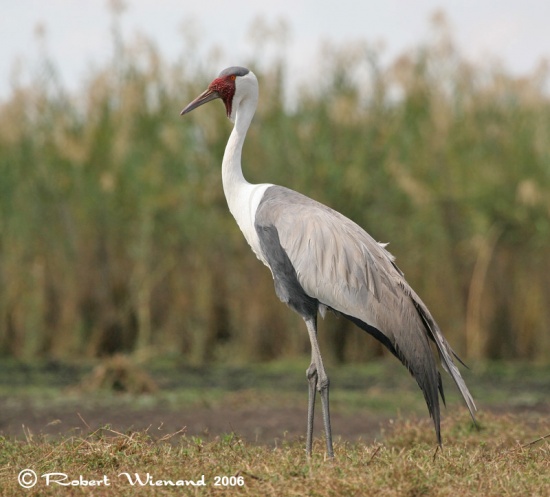| Line 21: | Line 21: | ||
==External Links== | ==External Links== | ||
| − | {{GSearch| | + | {{GSearch|Crane+carunculat}} |
[[Category:Birds]][[Category:Bugeranus]] | [[Category:Birds]][[Category:Bugeranus]] | ||
Revision as of 20:49, 23 July 2008
- Bugeranus carunculatus
Identification
172 cm. Ash grey back and wings, dark slaty gray head above the eyes and on the crown, otherwise white, including the almost fully feathered wattles which hang down from under the upper throat. Black breast, primaries, secondaries, and tail coverts, white upper breast and neck, red skin in front of the eye extending to the base of the beak and tip of the wattles, long bill, black legs and toes. Sexes identical, although males tend to be slightly larger.
Distribution
Zimbabwe, Botswana, Zambia, Angola and South Africa.
Taxonomy
A monotypic species.
Grus vs. Bugeranus
Sibley & Monroe (1996) place the Wattled Crane (carunculatus) in the genus Grus. However, Howard & Moore (2003) and Clements (2007) separate it in the monotypic genus Bugeranus, and the Opus follows in this consensus.
Habitat
Shallow wetlands.
Behaviour
The diet includes bulbs, corms, insects, seeds, leaves, acorns, aquatic vegetation and grain.
They breed in winter, building more than one nest - up to four. It will use one nest one year and another the next. 1 egg is laid.




